
The Pacific Station was created in 1837 as one of the geographical military formations into which the Royal Navy divided its worldwide responsibilities. The South America Station was split into the Pacific Station and the South East Coast of America Station.
Admiral Sir William Fanshawe Martin, 4th Baronet,, was a Royal Navy officer. As a commander, he provided valuable support to British merchants at Callao in Peru in the early 1820s during the Peruvian War of Independence. He became First Naval Lord in the Second Derby–Disraeli ministry in March 1858 and in that capacity acted as a strong advocate for the procurement of Britain's first ironclad warship. He went on to be Commander-in-Chief, Mediterranean Fleet and in that role provided important assistance during the Italian disturbances in 1860 and 1861, reformed the system of discipline in his fleet and developed a comprehensive system of manoeuvres for steam ships.

HMS Inconstant was an unarmored, iron-hulled, screw frigate built for the Royal Navy in the late 1860s. Upon completion in 1869, she was the fastest warship in the world and was assigned to the Channel Squadron. Two years later the ship was transferred to the Detached Squadron for a brief time before she was paid off into reserve in 1872. Inconstant was recommissioned in 1880 for service with the Flying Squadron that circumnavigated the world in 1880–82. On the return voyage, the ship was diverted to Egypt during the Anglo-Egyptian War of 1882 and played a minor role supporting operations ashore. She was reduced to reserve again after her return and was served as an accommodation ship in 1897. Inconstant was hulked in 1904 and became a training ship in 1906. She continued in that role, under a variety of names, until she was sold for scrap in 1955 and subsequently broken up, the second-to-last surviving Pembroke-built warship in existence.

HMS Tremendous was a 74-gun third rate ship of the line of the Royal Navy, designed by Edward Hunt, built to the lines of HMS Ganges by William Barnard's yard at Deptford Green, and launched on 30 October 1784.
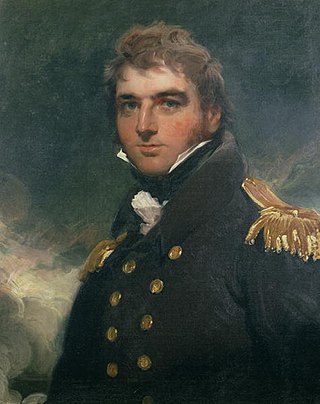
Vice-Admiral Sir Charles Paget GCH was a British sailor who also became a liberal politician and Member of Parliament.
Admiral Sir William Houston Stewart, was a senior British naval officer who, after a long, active career, eventually held the office of the Controller of the Royal Navy from 1872 to 1881.
Admiral Sir John Beresford, 1st Baronet, was a Royal Navy admiral, Second Sea Lord and Conservative MP.

Admiral of the Fleet Sir Thomas Byam Martin, was a Royal Navy officer. As captain of fifth-rate HMS Fisgard he took part in a duel with the French ship Immortalité and captured her at the Battle of Tory Island during the French Revolutionary Wars. Then while in command of the third-rate HMS Implacable in the Baltic Sea and attached to the Swedish Navy he took part in the capture the Russian ship Sewolod (Vsevolod) during the Napoleonic Wars.

Rear Admiral Charles John Austen CB was an officer in the Royal Navy and the youngest brother of novelist Jane Austen. He served during the French Revolutionary and Napoleonic Wars, and beyond, eventually rising to the rank of rear-admiral.

Admiral Sir James Hillyar KCB KCH was a prominent British Royal Navy officer of the early nineteenth century, who is best known for his service in the frigate HMS Phoebe during the Napoleonic Wars and the War of 1812. While in command of Phoebe, Hillyar was present at the Invasion of Ile de France in 1810, was heavily engaged at the Battle of Tamatave in 1811 and captured the USS Essex off Valparaíso in Chile in 1814. In addition, Hillyar was engaged in numerous other operations, his first battle occurring in 1781 off Boston. He remained in the Navy until his death in 1843, and was active at sea during the 1830s, commanding fleets in the North Sea and off Portugal. He was knighted twice and two of his sons later became full admirals, Charles Farrell Hillyar and Henry Shank Hillyar.
Vice-Admiral Lord Henry Paulet KCB was an officer in the Royal Navy who saw service in the American War of Independence, the French Revolutionary and Napoleonic Wars. Born into the British nobility as a younger son of the Marquess of Winchester, he rose through the ranks and had gained his own command by the early stages of the French Revolutionary Wars. He was involved in a number of famous engagements during his career, such as the capture of the French frigate Gloire in 1795, though he narrowly missed out on seeing direct action at two of the most significant naval battles of the wars with the French. The first was the Battle of Cape St Vincent, where he had left Jervis's fleet a few days previously, the second was the Battle of Copenhagen, where he remained with Sir Hyde Parker's reserve squadron. He nevertheless rose through the ranks to reach vice-admiral, despite an incident that saw him court-martialled and dismissed, only to be reinstated by the intervention of the King; and a tendency to eccentricity. He married towards the end of the wars with France, and had several children. Paulet served as one of the Lords Commissioners of the Admiralty from 1813, and was installed as a Knight Commander of the Bath in 1815, but ill-health forced his retirement from active service shortly afterwards, and he would die of cancer in 1832.
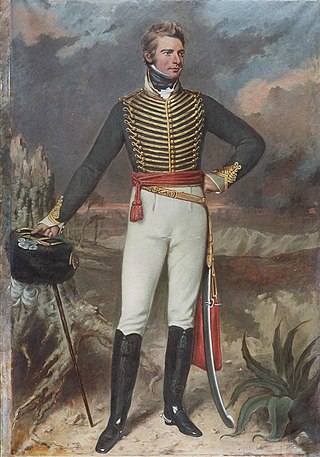
Vice-Admiral George Henry Seymour, was a Royal Navy officer who served as Third Naval Lord from 1866 to 1868.

Captain Sir Christopher Cole was an officer of the British Royal Navy who served in the American Revolutionary War, the French Revolutionary Wars and the Napoleonic Wars. Although he saw distinguished service in all three conflicts, he is best known for his exploits in the Dutch East Indies in 1810 and 1811, in which he was instrumental in the capture of the islands of Amboyna and Java. Cole's early career involved extensive service in the Caribbean Sea, operating against the French during the last years of the American Revolutionary Wars and serving in several large battles. During the peace that followed, Cole remained in the Navy and forged a working relationship with Captain Edward Pellew that would last two decades.
Richard Charlton (1791–1852) was the first diplomatic Consul from Great Britain to the Kingdom of Hawaii (1825–1843). He was surrounded by controversies that caused a military occupation known as the Paulet Affair, and real estate claims that motivated the formalization of Hawaiian land titles.
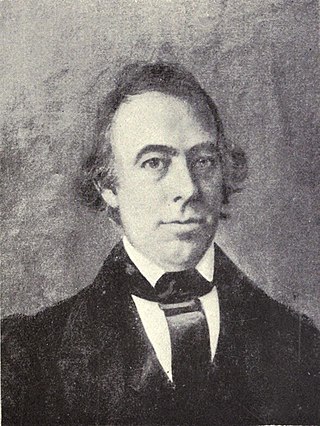
William Richards was a missionary and politician in the Kingdom of Hawaii.

Lord George Paulet CB was an officer of the Royal Navy.

The Paulet affair, also known as British Hawaii, was the unofficial five-month 1843 occupation of the Hawaiian Islands by British naval officer Captain Lord George Paulet, of HMS Carysfort. It was ended by the arrival of American warships sent to defend Hawaii's independence. The British government in London did not authorize the move and it had no official status.
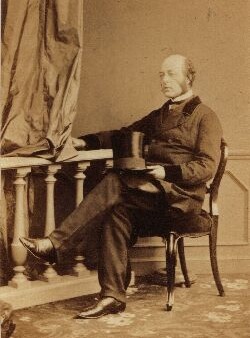
Admiral Sir Arthur Cumming was an officer of the Royal Navy.
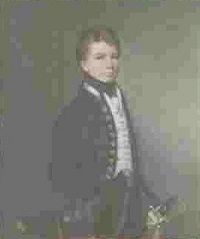
Sir Henry Byam Martin KCB was a senior Royal Navy officer, and a watercolour artist.
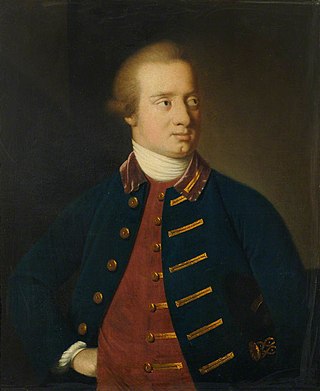
Robert Fanshawe was a British officer of the Royal Navy and a Member of Parliament.
















